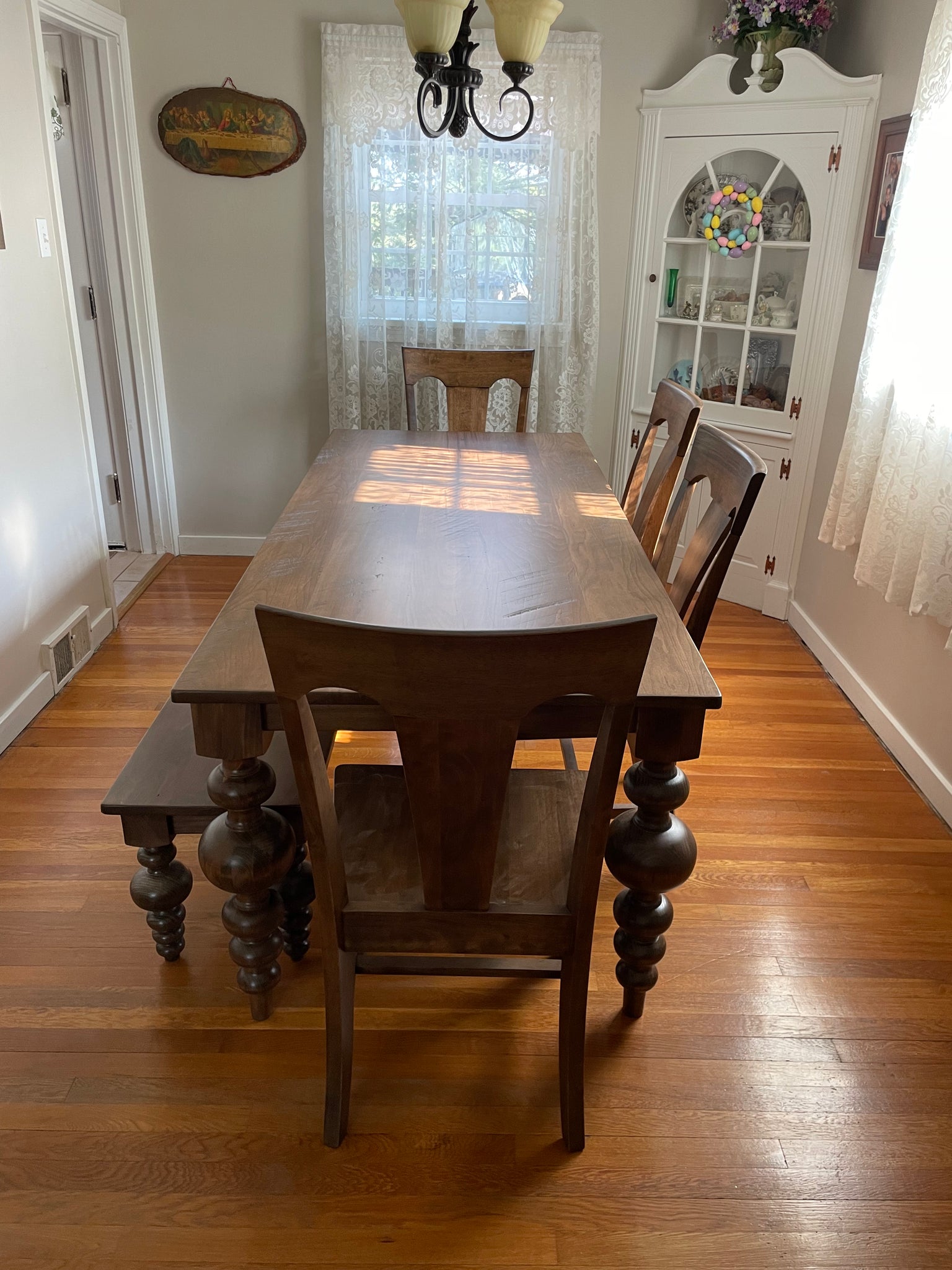A Detailed Take A Look At Table Leg Styles: Discovering the Suitable Match
Selecting the right table leg style is critical for both aesthetic charm and useful functionality. Conventional 4 legs supply ageless style and security, while the pedestal base provides boosted legroom and a modern appearance. For those with larger tables, trestle legs make sure tough assistance, whereas barrette legs introduce a mid-century modern-day vibe with their minimalist design. The x-shaped legs mix modern design with improved stability. Each of these options brings unique advantages, making the selection more than simply a matter of preference. Explore even more to discover which design completely enhances your dining room and way of life.
Typical Four Legs
Among the various sorts of table leg designs, the conventional four-leg style continues to be a timeless choice for numerous families. This timeless arrangement offers a harmonious blend of functionality and appearances, making it a seasonal fave. 4 legs provide balanced support, ensuring the table remains stable and capable of bearing substantial weight. This is particularly beneficial for homes that often host large gatherings or utilize their table for numerous objectives, such as job or crafting.
From a visual point of view, the conventional four-leg design can be easily adjusted to different interior designs. Whether crafted from timber, metal, or a combination of products, these legs can be elaborately carved, streamlined and minimalistic, or anything in between. Their adaptability enables them to complement both rustic and modern settings seamlessly.
Moreover, the simple structure of the four-leg layout assists in simplicity of movement and positioning within a room. Unlike even more complicated bases, this design lessens obstructions, giving adequate legroom for diners. In recap, the traditional four-leg table leg style weds withstanding style with practical capability, making it an astute selection for those seeking both kind and function in their eating furniture.
Stand Base
Frequently celebrated for its classy and space-efficient layout, the pedestal base is a prominent option to the typical four-leg configuration in dining table leg styles. Without corner legs, restaurants are managed better liberty of movement, making it a perfect option for round and oblong tables that advertise even more intimate and comprehensive celebrations.
Moreover, the pedestal base's central support can handle substantial weight, enabling for the use of much heavier table tops, such as marble or thick wood. This stamina combined with its visual adaptability makes the stand base a prominent option in both standard and modern interior settings. It can perfectly integrate with various design themes, from classic elegance to minimal modernity. In addition, the main column itself uses check my source a canvas for complex styles and creative expressions, adding an aspect of visual rate of interest below the table. In recap, the pedestal base combines capability snappy, making it a fine-tuned and practical alternative for my latest blog post varied dining environments.
Trestle Legs
Trestle legs supply a robust and classic foundation for eating tables, defined by their straight cross-bracing and strong support beam of lights. Originating from middle ages times, this design has actually evolved yet preserved its vital structure, making it a perennial fave in both standard and modern settings. The main trestle beam, commonly supported by 2 or even more vertical blog posts, provides phenomenal stability, enabling larger table lengths without the demand for additional legs.
A considerable benefit of trestle leg tables is the sufficient legroom they supply. Unlike tables with four corner legs, the lack of blockages at the table's edges supplies unblocked space for chairs and diners, boosting convenience and ease of access. This makes trestle tables excellent for accommodating larger celebrations, whether in a dining-room or a banquet hall.
The visual convenience of trestle legs is noteworthy. Offered in a selection of products such as timber, metal, and composite, they can be finished to match a vast array of interior styles. From rustic farmhouse to sleek contemporary styles, trestle legs can be tailored to match specific tastes. Their enduring appeal and functional benefits make trestle legs a compelling option for those looking for both design and functionality in their table.
Hairpin Legs

The appeal of hairpin legs depends on their simplicity and adaptability - dining room table legs. Readily available in a variety of products, consisting of steel and brass, they can be finished in many shades to complement different indoor designs. Whether coupled with a rustic wooden table top or a modern glass surface area, hairpin legs effortlessly blend capability with a touch of classic charm
Sturdiness is an additional notable feature of hairpin legs. In spite of their fragile look, these legs are crafted to bear substantial weight, guaranteeing the table continues to be secure and secure. Additionally, they are fairly simple to set up, making them a prominent selection for do it yourself fanatics and specialist furnishings manufacturers alike.
X-Shaped Legs

Built from materials such as steel, wood, or a combination of both, X-shaped legs can be tailored to match numerous layout preferences. Steel legs frequently lend a smooth and industrial feel, suitable for loft-style apartment or condos and modern-day dining spaces.
In addition, the design behind X-shaped legs makes sure even weight circulation, minimizing the threat of wobbling and enhancing toughness. This makes them particularly fit for larger table that need extra assistance. Basically, X-shaped legs mix sensible design with contemporary aesthetic appeals, making them a classic selection for diverse eating atmospheres.
Verdict
A detailed understanding of eating table leg styles reveals the distinctive attributes and benefits of each layout. Trestle legs make sure robust assistance for bigger tables, and hairpin legs present a mid-century contemporary aesthetic.